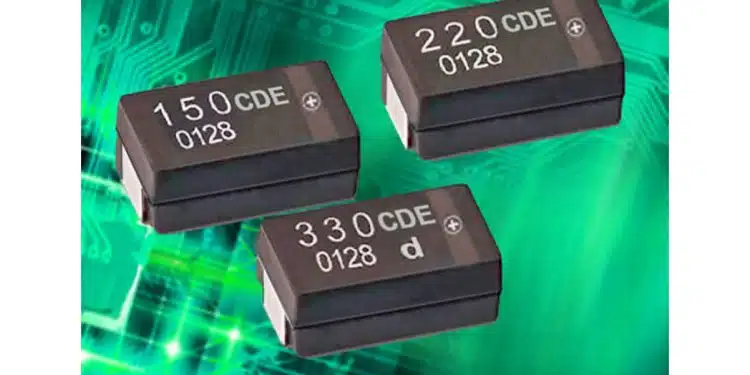Cornell Dubilier’s XMPL aluminum polymer chip capacitor series has been expanded to match applications with higher voltage and capacitance requirements.
Their excellent capacitance and voltage stability with temperature and frequency make these conductive polymer capacitors ideal for applications where bulk storage and high ripple current filtering are needed.
Possessing much lower ESR and a shorter height profile than SMT aluminum electrolytics, XMPLs offer designers the opportunity to reduce the size and cost of their high-frequency/high-ripple applications by using fewer components.
Standard capacitance values now range from 6.8µF to 470µF, with a maximum working voltage of 35VDC in a molded package measuring 7.3×4.3×1.9 mm. The operating temperature is -55°C to 105°C with a load life of 2,000 hours at 105°C with rated voltage applied. XMPLs are halogen-free and RoHS-compliant.
Features
- Small Size
- Low Impedance
- Halogen Free Epoxy
- RoHS Compliant
- Stable with Temperature, Applied Voltage, and Frequency
Applications
- DC/DC Converters
- LED lighting
- High-Frequency SMPS, SSDs
- DC Output Filtering
- Decoupling
- Computer Peripherals
- High Ripple Current Applications































